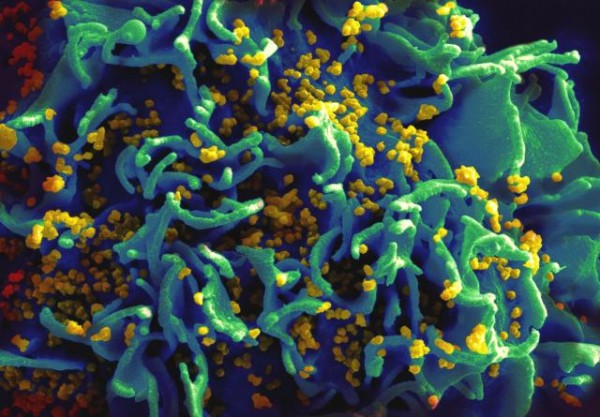By Dane Lorica, | November 09, 2016

HIV is now listed as a carcinogen. (Flickr)
Seven newly reviewed substances were included in the 14th Report on Carcinogens released by the US Department of Health and Human Services this month. The latest list includes a total of 248 cancer-causing organisms and substances.
Like Us on Facebook
Five new viruses were added including the Human Immunodeficiency virus type 1 (HIV-1), Human T-cell lymphotropic virus type (HTLV-1), Epstein-Barr virus (EBV), Kaposi sarcoma-associated herpesvirus (KSHV), and Merkel cell polyomavirus (MCV).
The microbes mentioned are associated with 20 types of cancer such as non-melanoma skin cancer, lung cancer, eye cancer, stomach cancer, and many lymphoma types.
Linda Birnbaum, the director of the National Institute of Environmental Health Sciences and the National Toxicology Program, said that "approximately 12 percent of human cancers worldwide are attributed to viruses, and there are no vaccines currently available for these five viruses, prevention strategies to reduce infections that can lead to cancer are even more critical."
For instance, HIV that weakens the immune system of the body makes the risk for cancer higher. HIV can be transmitted through sexual activity, pregnancy, and infected needles. Individuals suffering from the disease may also develop non-Hodgkin and Hodgkin lymphomas, penile, cervix, vaginal and vulvar cancers, and oral cancers.
On the other hand, HTLV-1 can be acquired through exposure to biological factors and contaminated cells. It can result to T-cell leukemia lymphoma. EBV is passed through the saliva and is present worldwide affecting over 90 percent of adults. Infected individuals may remain healthy and show no symptoms. MCV is commonly found on the skin and rarely progresses to cancer.
One substance included on the list is Trichloroethylene (TCE), a solvent used in making hydrofluorocarbon chemicals. The report explained that people are exposed to the carcinogen in many ways as it can be released in water, air, and soil near areas where it is being used. In fact, "it has been found in the groundwater at many military and Superfund sites."
Another substance declared is Cobalt, but this "does not include vitamin B12 because Cobalt in this essential nutrient is bound to protein and does not release Cobalt ions."
The report explained that exposures to carcinogens would not automatically cause cancer to a person. Birnbaum said that "some people are more susceptible because of genetic, lifestyle, nutrition or age when the exposure occurs."
With the new substances added to the list of carcinogens, it is recommended for individuals to consult health care experts to know how to reduce the risks of developing cancer.
-
Use of Coronavirus Pandemic Drones Raises Privacy Concerns: Drones Spread Fear, Local Officials Say

-
Coronavirus Hampers The Delivery Of Lockheed Martin F-35 Stealth Fighters For 2020

-
Instagram Speeds Up Plans to Add Account Memorialization Feature Due to COVID-19 Deaths

-
NASA: Perseverance Plans to Bring 'Mars Rock' to Earth in 2031

-
600 Dead And 3,000 In The Hospital as Iranians Believed Drinking High-Concentrations of Alcohol Can Cure The Coronavirus

-
600 Dead And 3,000 In The Hospital as Iranians Believed Drinking High-Concentrations of Alcohol Can Cure The Coronavirus

-
COVID-19: Doctors, Nurses Use Virtual Reality to Learn New Skills in Treating Coronavirus Patients







